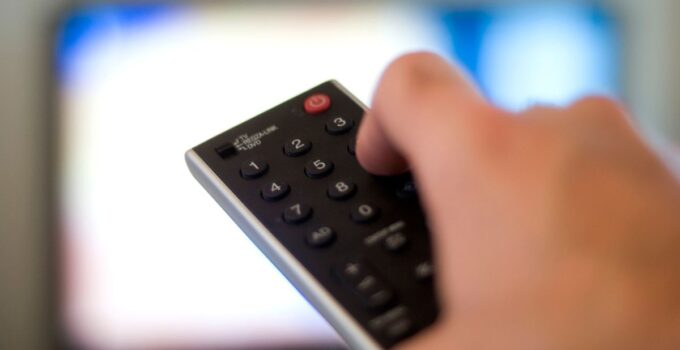Even though some people may say we are exaggerating, we believe that a TV is an essential entertainment device in every household. Yes, we spend a lot of time online, scrolling through social media platforms or playing games, but when we return home after a long day, we want to relax and catch the latest episode of our favorite show.
However, sometimes the TV aerial may malfunction due to numerous reasons. When this happens, your TV will greet you with a “no signal” message. We have all been in this situation and understand the frustration, which is why in the following article, we are going to discuss the most common issues you can easily fix.
1. Double image
Source: alpengeist-tvrepair.blogspot.com
Many people don’t know that this common signal problem is also called ghosting. So, what is it exactly? Well, in a nutshell, when your antenna receives both the normal signal and the reflected one, you will end up with a double image on your TV. It can happen when the signal reflects from another surface, maybe a nearby building.
Naturally, the solution to this disturbance is obvious. All you need to do is adjust or move the antenna a bit to prevent it from catching a reflected signal. You can easily do this on your own, or if for whatever reason you don’t feel comfortable climbing the roof or don’t know how to position the device correctly, according to TV Antenna Installer, you should employ professionals.
2. Too much signal
Okay, this is completely opposite to the “no signal” issue we already mentioned, and even though it may seem odd, it happens fairly often. You may not know this, but every single device has a maximum signal level it can receive, and therefore, in certain situations, it can get overloaded.
There are several ways you can fix this problem. Firstly, if your device has an unnecessary amplifier, you should just remove it and use a splitter to connect the antenna to two or more TVs in your home. Furthermore, you can purchase an additional part called an attenuator to decrease the signal before it reaches the TV. Keep in mind that this piece comes in various models and sizes, meaning that you should research the one that meets all your requirements to ensure it works perfectly,
3. Poor signal
Source: mymove.com
Without a doubt, this is the issue people most frequently face. The truth is that there may be several causes of it. If you have just installed the antenna, and you see the “no signal” message the first time you turn the TV on, then you didn’t install or place the device correctly. There are two possibilities. Either you didn’t connect the antenna properly, which is another reason for you to hire an expert to complete the task for you if you don’t know what you are doing, or on the other hand, there is an interference or an obstacle between the main tower and your antenna, such as a tall building or even a hill. If the latter is the case, then you need to adjust the device or even move it to another place.
Lastly, if you have used the same antenna for quite some time, it may malfunction due to deterioration. In this case, you need to purchase a new device. However, since this can be quite an expensive investment, you should rule out other causes first.
4. Damaged cables
As you know, cables wear out and deteriorate naturally over time, and there isn’t really anything you can do to prevent this from happening. When it comes to the aerial cable, it is another common source of bad reception and signal. Due to this reason, checking it out and ensuring that it is still in good condition is one of the tasks that should be at the top of your list. This is especially important when it comes to the cable that is outdoors. Why? Well, obviously, harsh weather conditions, such as rainfall, snow, and water, speed up the deterioration process. The bottom line is that purchasing and installing this part can easily return your HD TV experience.
5. Electrical interference
Source: aroged.com
This is another common source that many people don’t think of at first. So, they purchase new parts or the entire antenna, replace and install everything, only to continue experiencing problems. The truth is that some of your household appliances can cause electrical interference that results in a weak signal. Now, if you suspect this to be an issue, it can be easy to detect which appliances are responsible. Obviously, this is the case for devices that you do not constantly use, meaning that they are turned off during some parts of the day. However, some always work, such as the fridge.
Figuring out which ones cause the disturbance is fairly easy. All you have to do is conduct a test and turn them on and off while observing the TV reception. Once you locate the said appliance, you should research what you can do to prevent this interference and fix the issue.
6. TV settings
Finally, pressing the wrong button on the remote can cause the “no signal” message. You would be surprised how often this happens, and it doesn’t even occur to people to check it out. All you have to do is go to the settings and look for the input that is currently set. Then, if it is not set correctly, you only have to find the right input and click on it.
This is pretty easy if you have had the TV for a long time and know how everything works. However, if you just got it, you may have to consult the manual to figure it out. Also, you may be presented with a list of options, so you have to find the right one.
Wrapping up
To sum up, this is a list of the most common problems that can disturb your TV reception signal. As you can see, fixing these is pretty easy, which is why you need to investigate them all before investing in a new TV antenna.




